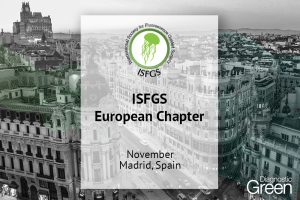Background: Technetium-99 (99m Tc) lymphoscintigraphy with blue dye injection is an accepted method for sentinel lymph node (SLN) mapping, but blue dye has known adverse effects, and injection of 99m Tc may increase time under anesthesia for pediatric patients. Indocyanine green (ICG) may serve as an adjunct to assist with visibility and identification of SLNs. We hypothesized that sensitivity of ICG was similar to blue dye in SLN biopsies.
Methods: Thirty patients (36 procedures with 96 total specimens) underwent preoperative intradermal injection of 99m Tc, followed by intradermal injection of isosulfan blue and ICG. Test characteristics of blue dye, ICG, and 99m Tc included sensitivity, specificity, positive predictive value (PPV), and negative predictive value (NPV).
Results: ICG had a sensitivity of 87% and PPV of 83% for detection of 99m Tc-hot lymph nodes; blue dye had a sensitivity of 44% and PPV of 97%. For detection of pathologically confirmed lymph nodes, ICG had a sensitivity of 84% and a positive predictive value (PPV) of 91%. 99m Tc had a sensitivity of 82% and a PPV of 94%. ICG had no significant difference in odds of being positive in pathology-confirmed lymph nodes compared to 99m Tc (odds ratio [OR], 0.818; 95% confidence interval [CI], 0.3-2.172; p = .823) and had higher odds than isosulfan blue (OR, 0.025, 95% CI, 0.001-0.148; p < .001).
Conclusion: This study established the efficacy of ICG as an adjunct to SLNB in the pediatric and young adult population. ICG was safe, more efficacious than blue dye, and may obviate the need for lymphoscintigraphy in selected patients resulting in reduced time under anesthesia
https://acsjournals.onlinelibrary.wiley.com/doi/10.1002/cncr.35023




